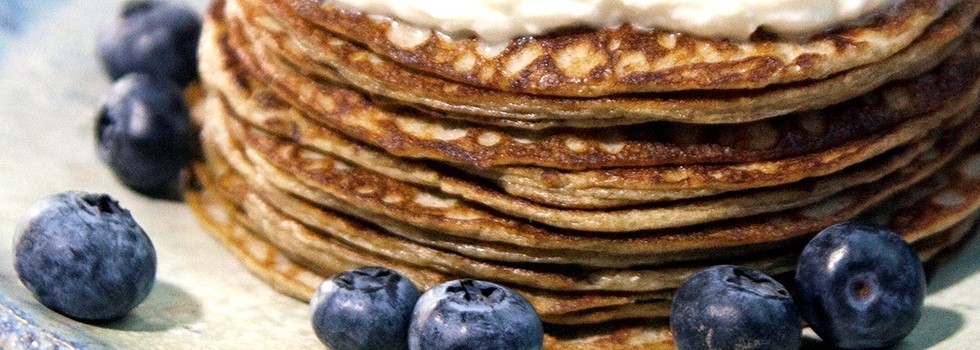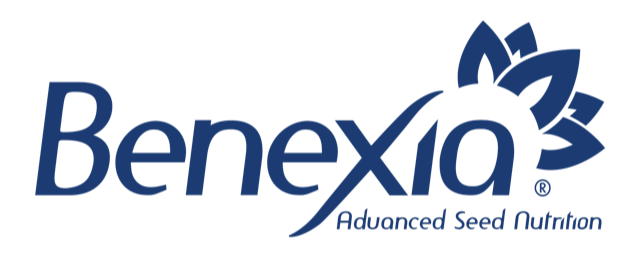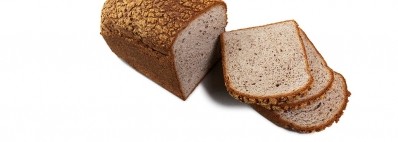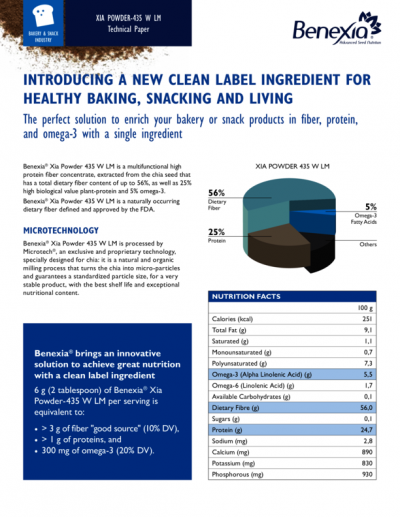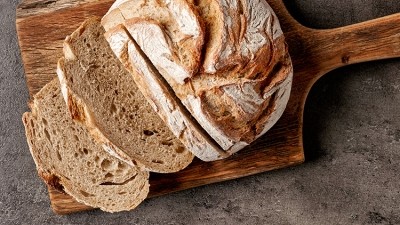Promotional Features
Chia checks all the “big trend” boxes: Clean and sustainably sourced, high in fiber, supports gut health and immunity
In this pandemic age, we are seeing a major shift in not just consumer trends but their deep commitment to those trends. People are putting “their money where their mouth is” in supporting brands that are transparent in their environmentally friendly and good-for-you claims. Today’s big buzz words include regenerative agriculture, plant-based, non-GMO, organic, clean label, simple ingredient list, allergen friendly, immune boosting, supporting gut health. What if there was one ingredient that could be all of those things?
Introducing: Chia. Rediscovered in the '90s, the chia seed is a nutritional powerhouse, all-natural and one of the most eco-friendly crops available to the food industry right now. Consumers, foods scientists and health professionals fully recognize the benefits of this tiny seed, benefits that are missing in so many products on the shelves today. It is time for the food industry to start taking advantage of chia.
A few chia statistics:
- Made up of more than 20% plant-based protein and over 60% healthy omega-3 fat
- High in fiber with the perfect ratio of soluble to insoluble
- High in antioxidants
- Allergen-friendly
Chia is frequently promoted in healthy diets by medical experts as it is a complete protein, full of healthy fats and fiber all of which support cardiovascular, gut and immune health.
Chia: Proven health benefits
In the last two decades, diet and disease research has honed in on chia because of the potential health benefits associated with some of its biologically active components.
Chia is primarily made up of omega-3 fat, specifically alpha-linoleic acid (ALA) and eicosapentaenoic acid (EPA). Research has shown a cardio-protective effect when consuming foods like chia that are high in omega-3 as it reduces plasma omega-6 levels, effectively lowering omega-6 to omega-3 ratios.1-2 Chia studies have also shown a significant reduction in: cardiovascular diseases risk3, systolic blood pressure (SBP), inflammatory markers3, blood lipids levels3-4, post-prandial blood sugar3-4 as well as a prebiotic effect5.
Nutritionally speaking, the chia seed has “a lot of the good stuff and none of the bad stuff”. A nutrient dense ingredient, it comes with no added sugar, saturated fat or sodium, all the components infiltrating products today and known to cause negative health effects.
Chia is not a miracle food, it is simply a unique crop, produced naturally and sustainably by farmers for over 30 years. It is produced in a region where the climate favors its growth and maximizes nutrient absorption which keeps it non-GMO and eco-friendly.
Chia ingredients
Benexia brings to the table over 25 years of focused agricultural production on chia and over 10 years producing chia ingredients for the food and nutraceutical industry. Very early on, they understood the industry’s need for natural nutrient-dense ingredients, so the company developed chia-based ingredients for food and nutraceutical application, keeping the nutrients of chia 100% naturally available.
Since 2010, Benexia has focused R&D on developing chia ingredients with four main goals:
- Ensure a sustainable supply chain from farm to export
- Develop ingredients that can be easily integrated into finished products
- Ensure food safety and regulatory compliance
- Deliver a cost-effective nutrient dense ingredient
Formulating with chia
Some common concerns of food scientists when using chia are not being able to incorporate the ingredient or only being able to use such a small amount that they cannot capitalize on the nutrient claims. This is because most are only familiar with the whole seed, not the chia-based ingredients Benexia has developed.
The whole seed is commonly used in bakery applications as a topping by bread manufacturers worldwide. It is simple and great for artisan, multi-grain and whole wheat breads, buns, loaves and flatbreads. However, when used in its whole form as a topping or when incorporated into dough, the chia seed cannot constitute more than 5% of the finished product. It also does not stick very well as a topping and has some limitations when used in dough, as chia's seed can impede dough formation and bread texture.
This leads many R&D teams to push chia to the side. But there is a way to maintain all the benefits (nutrition, cost, sustainability) of chia and still incorporate it into bakery applications: chia flour.
As you can see, the chia seed is rich in fiber, protein and omega-3 ALA however, when applied as a topping or in the dough, the bakery formulation cannot take advantage of the chia mucilage (gelling ring photo 2). The chia seed absorbs 4 to 6 times its weight in water, while in its milled form, it is double that. This phenomenon occurs as chia flour has a higher fiber concentration, and the micro-milled particles offer a larger surface area doubling water absorption capability.
Photo reference: Muñoz, L.A., et al. Chia seeds: Microstructure, mucilage extraction and hydration. Journal of Food Engineering (2011), doi:10.1016/j.jfoodeng.2011.06.037
When chia flour is directly incorporated into a dry mix, it minimizes material loss and increases the ability to rework the mix. Also, because it picks up more moisture, the chia flour allows for more water in the formulation, which helps to keep finished product costs down.
Using chia flour allows for a fivefold increase in chia and can be applied to any standard formulation without issue.
Key technical takeaways: Chia flour in bakery applications
- Low in fat, allowing it to undergo baking or heat treatment process without damaging the high polyunsaturated fat present in the chia flour.
- Uniformly mixes in dough and starts to absorb moisture during the hydration and fermentation processes.
- Benefits dough cohesion and reduces water activity, even if additional water is added to the formulation.
- The pseudo-plasticity characteristic of the chia mucilage concentrated in the chia flour improves dough swirl formation and retains the softness of the bread crumb.
- Significantly improves the nutritional value for omega-3 fat, protein, fiber, calcium, phosphorus, and potassium.
- Retains the whole grain appearance improving the overall sensorial properties of the final product.
- Very effective in replacing eggs, hydrocolloids and binders such as xanthan gum in bakery applications.
- Optimal for gluten-free, keto, and high protein formulations.
- Provides functionality in one single eco-friendly ingredient.
Bread is just one of many application examples where natural ingredients from a healthy and nutrient dense crop, can deliver superior nutritional and functional benefits to today's standard finished product formulations.
At Benexia, we are experts in chia. We manufacture numerous natural eco-friendly chia ingredients for food or nutraceutical applications and work closely with R&D facilities to provide our customers with integrated chia ingredient solutions.
References:
- Ayerza RJ, Coates W. seed yield oil content and fatty acid composition of three botanical sources of & ohgr: 3 fatty acid planted in the Yugas ecosystem of tropical Argentina. Trop Sci. 2007;47(4):183–187. doi: 10.1002/ts.211. [CrossRef] [Google Scholar]
- Valenzuela R, Bascuñán K, Chamorro R, Barrera C, Sandoval J, Puigrredon C, Parraguez G, Orellana P, Gonzalez V, Valenzuela A. Modification of Docosahexaenoic Acid Composition of Milk from Nursing Women Who Received Alpha Linolenic Acid from Chia Oil during Gestation and Nursing. Nutrients. 2015 Aug 4;7(8):6405-24. doi: 10.3390/nu7085289. PMID: 26247968; PMCID: PMC4555128.
- Vuksan V, Whitman D, Sievenpiper J, Jenkins A, Rogovik A, Bazinet R, Vidgen E, Hanna A. Supplementation of conventional therapy with the novel grain Salba (Salvia hispanica L.) improves major and emerging cardiovascular risk factors in type 2 diabetes. Diabetes Care. 2007;30:2804–2810. doi: 10.2337/dc07-1144. [PubMed] [CrossRef] [Google Scholar]
- Vuksan V, Jenkins AL, Dias AG, Lee AS, Jovanovski E, Rogovik AL, Hanna A. Reduction in postprandial glucose excursion and prolongation of satiety: possible explanation of the long-term effects of whole grain Salba (Salvia Hispanica L.) Eur J Clin Nutr. 2010;64(4):436–438. doi: 10.1038/ejcn.2009.159. [PubMed] [CrossRef] [Google Scholar]
- Muñoz, Loreto, Tamargo García, Alba, Cueva, Carolina, Laguna, Laura, Moreno-Arribas, María Victoria, 2018/11/01-104-11. Understanding the impact of chia seed mucilage on human gut microbiota by using the dynamic gastrointestinal model simgi®. 50.10.1016/j.jff.2018.09.028, Journal of Functional Foods
